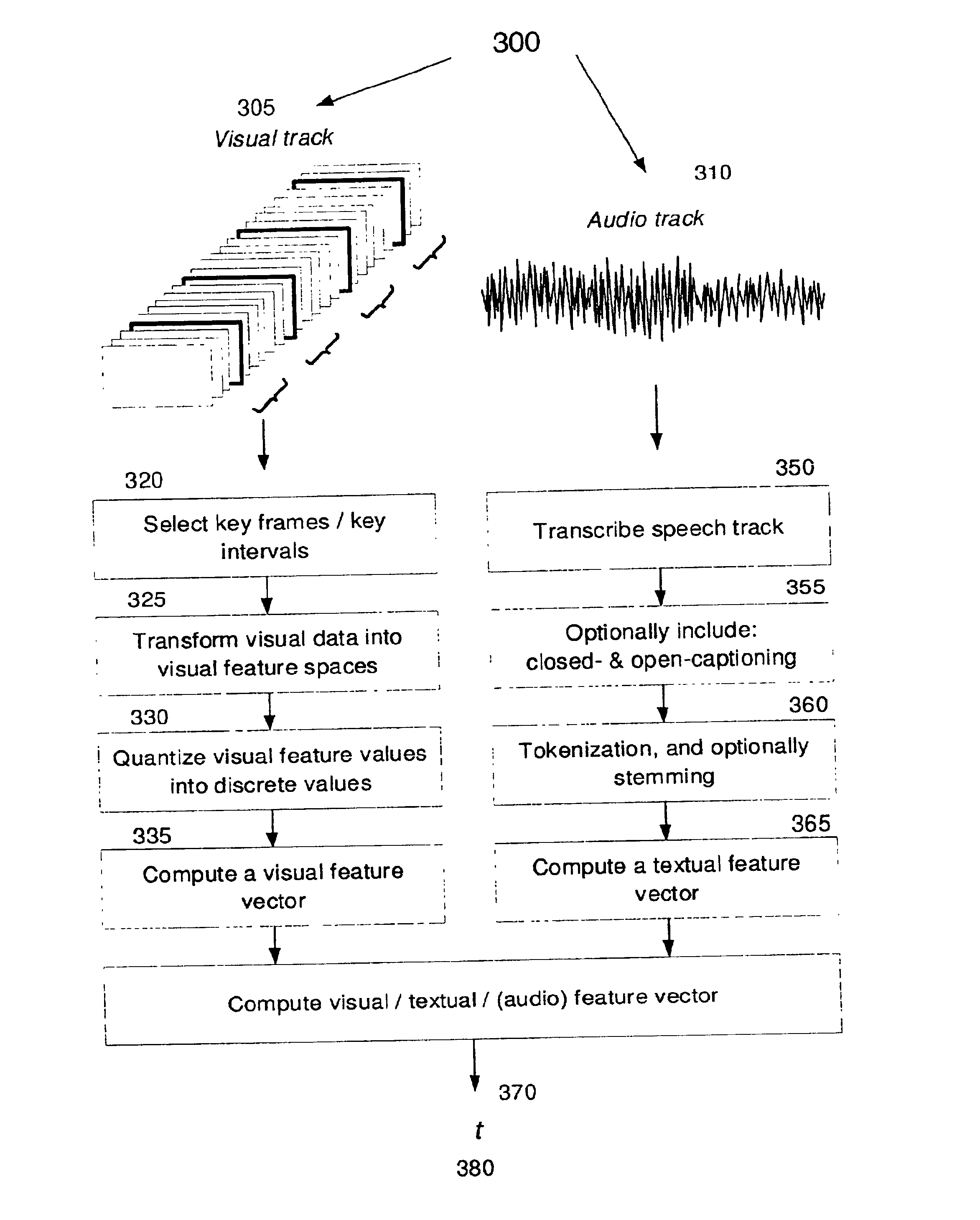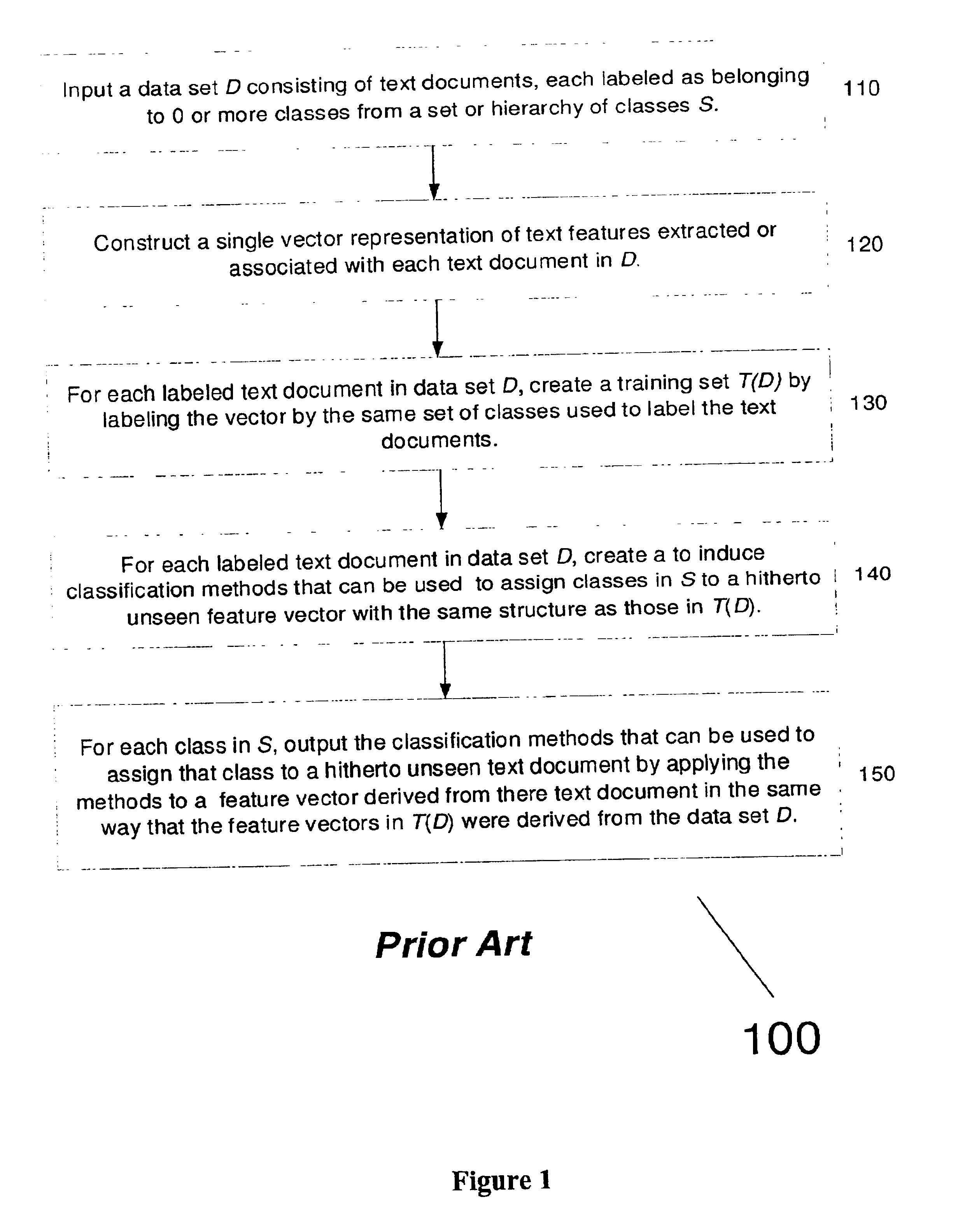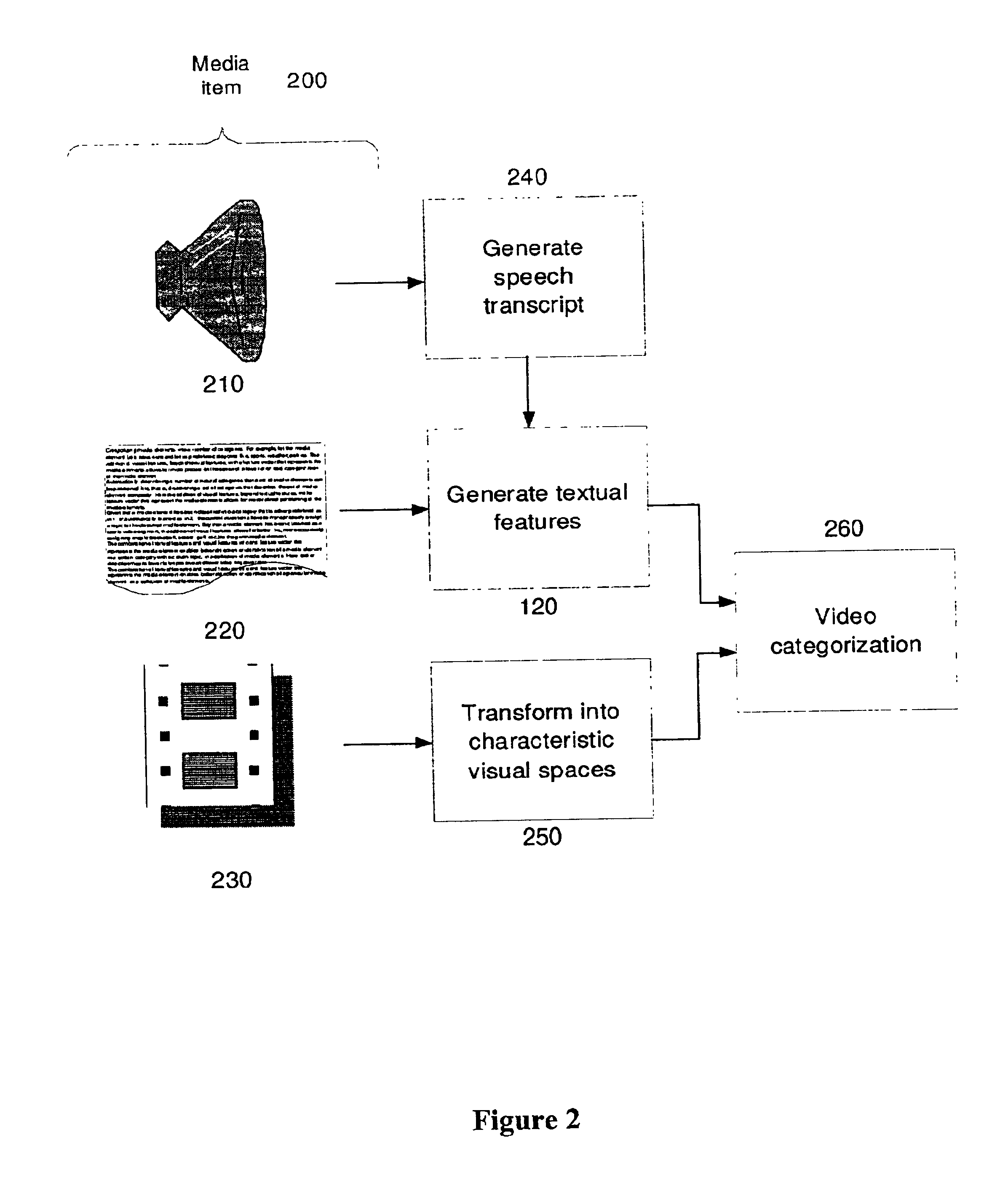Method and apparatus for inducing classifiers for multimedia based on unified representation of features reflecting disparate modalities
a multimedia and feature technology, applied in the field of multimedia information, can solve the problems of limiting the number of media items that can be distinguished, media item representations are not designed to handle in a coherent fashion both textual and visual features, and achieve the effect of ensuring compatibility and superior performan
- Summary
- Abstract
- Description
- Claims
- Application Information
AI Technical Summary
Benefits of technology
Problems solved by technology
Method used
Image
Examples
Embodiment Construction
[0116]This system categorizing media items has two distinct aspects. The first aspect is called the training phase which builds representations of the reference media items; the second phase is called the categorization phase, where instances media items are categorized. The training phase is an off-line process that involves processing of the reference media items to form a set of one or more categories. The categorization phase classifies a media item in a collection of such items by processing the media item to extract audio and visual features and using the media item class representations.
[0117]FIG. 1 shows a prior art flowchart for a system 100 for categorizing text documents. In step 110, a set of text documents is input to the system. Each text document is labeled as belong to a class S=ci, i=1, . . . , C. The classes S can be hierarchical, in the sense that each class S, can be recursively divided up into a number of subclasses, S=Ssubclass1, Ssubclass2, . . . , SsubclassN....
PUM
 Login to View More
Login to View More Abstract
Description
Claims
Application Information
 Login to View More
Login to View More - R&D
- Intellectual Property
- Life Sciences
- Materials
- Tech Scout
- Unparalleled Data Quality
- Higher Quality Content
- 60% Fewer Hallucinations
Browse by: Latest US Patents, China's latest patents, Technical Efficacy Thesaurus, Application Domain, Technology Topic, Popular Technical Reports.
© 2025 PatSnap. All rights reserved.Legal|Privacy policy|Modern Slavery Act Transparency Statement|Sitemap|About US| Contact US: help@patsnap.com



